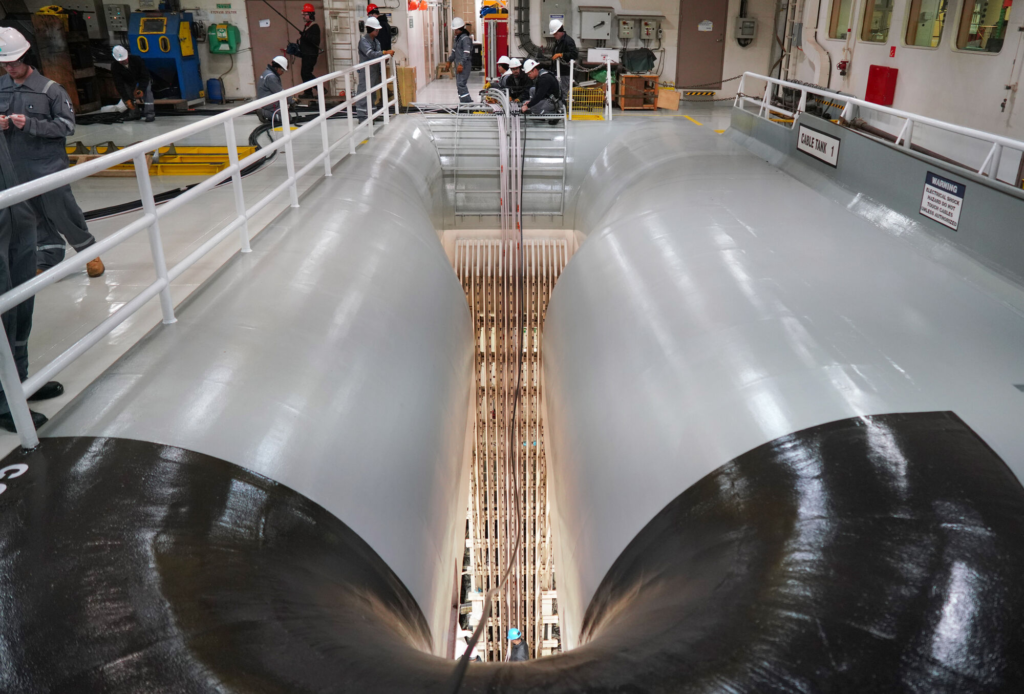When you send an email, stream a movie, or video call a friend on the other side of the world, have you ever wondered how that data travels across the globe? The answer lies beneath the ocean’s surface, in a vast network of undersea cables that crisscross the planet. These cables are the unsung heroes of the internet, carrying 99% of international data and connecting continents in milliseconds.
But how do these cables work? Who builds them, and how are they maintained? This is the fascinating story of how the internet travels across oceans, revealing the incredible engineering, collaboration, and innovation that keep the world connected.
The Backbone of the Internet: What Are Undersea Cables?

Undersea cables, also known as submarine cables, are fiber-optic lines laid on the ocean floor to transmit data between countries and continents. They are the backbone of the global internet, enabling everything from social media to financial transactions.
How Do They Work?
Fiber-optic cables use light to transmit data. Inside each cable are thin strands of glass or plastic, each capable of carrying thousands of gigabits of data per second. These strands are bundled together, protected by layers of insulation, and reinforced with steel or copper to withstand the harsh conditions of the ocean floor.
A Global Network
Today, there are over 400 undersea cables spanning more than 1.3 million kilometers (800,000 miles). These cables connect every continent except Antarctica, forming a complex web that powers the internet.
A Brief History: From Telegraphs to Fiber Optics

The story of undersea cables dates back to the 19th century, long before the internet existed.
The First Undersea Cable
In 1858, the first transatlantic telegraph cable was laid between North America and Europe. It allowed messages to be sent in minutes rather than weeks, revolutionizing communication. However, the cable failed after just a few weeks due to technical issues.
The Rise of Fiber Optics
The modern era of undersea cables began in the 1980s with the advent of fiber-optic technology. Unlike copper cables, which transmit electrical signals, fiber-optic cables use light, allowing for faster and more reliable data transmission.
Building the Internet’s Underwater Highways

Laying undersea cables is a monumental task that involves cutting-edge technology, meticulous planning, and international collaboration.
Step 1: Route Planning
Before a cable can be laid, engineers must survey the ocean floor to determine the safest and most efficient route. This involves avoiding underwater hazards like volcanoes, shipwrecks, and fishing zones.
Step 2: Cable Manufacturing
Undersea cables are manufactured in specialized facilities, where fiber-optic strands are bundled together and encased in protective layers. Each cable is designed to withstand extreme pressure, temperature changes, and even shark bites.
Step 3: Cable Laying
Cables are loaded onto specially designed ships equipped with plows that bury the cables in the seabed. In shallow waters, cables are buried to protect them from fishing nets and anchors. In deeper waters, they are laid directly on the ocean floor.
Step 4: Testing and Activation
Once the cable is laid, it undergoes rigorous testing to ensure it can transmit data reliably. After testing, the cable is connected to landing stations on shore, where it links to the terrestrial internet infrastructure.
The Challenges of Maintaining Undersea Cables
Undersea cables are built to last, but they are not invincible. Maintaining this global network is a constant challenge.
Natural Hazards
Earthquakes, underwater landslides, and even volcanic eruptions can damage cables. For example, in 2006, an earthquake near Taiwan severed several cables, disrupting internet access across Asia.
Human Activities
Fishing trawlers and ship anchors are among the biggest threats to undersea cables. To mitigate this risk, cables are often buried in shallow waters and marked on nautical charts.
Repairing the Cables
When a cable is damaged, specialized repair ships are dispatched to locate the break and haul the cable to the surface for repairs. This process can take days or even weeks, depending on the location and severity of the damage.
Who Owns the Undersea Cables?
Undersea cables are owned and operated by a mix of private companies, governments, and consortia.
Tech Giants
In recent years, tech companies like Google, Facebook, and Microsoft have invested heavily in undersea cables to support their global operations. For example, Google’s Dunant cable connects the U.S. and France, while Facebook’s 2Africa cable will circle the African continent.
Telecom Companies
Traditional telecom companies, such as AT&T and China Mobile, also own and operate undersea cables. These companies often form consortia to share the costs and risks of building new cables.
Governments
Some governments invest in undersea cables for strategic reasons, such as ensuring reliable communication during emergencies or supporting economic development.
The Future of Undersea Cables

As the demand for internet connectivity grows, so does the need for new undersea cables.
Increasing Capacity
New cables are being designed to carry even more data. For example, the Marea cable, jointly owned by Microsoft and Facebook, has a capacity of 160 terabits per second—enough to stream 71 million HD videos simultaneously.
Expanding Reach
Undersea cables are also reaching new regions, such as the Arctic, where melting ice is opening up new shipping routes. The Arctic Connect project aims to lay a cable between Europe and Asia via the Arctic Ocean, reducing latency and improving connectivity.
Sustainability
The environmental impact of undersea cables is a growing concern. Companies are exploring ways to make cables more sustainable, such as using eco-friendly materials and minimizing disruption to marine ecosystems.
Real-Life Impact: How Undersea Cables Shape Our World
Undersea cables are more than just infrastructure—they are the lifelines of the modern world.
Global Communication
Without undersea cables, international communication would be slow and unreliable. These cables enable everything from video calls to global news broadcasts.
Economic Growth
Undersea cables support global trade and commerce by enabling real-time communication between businesses, banks, and governments.
Disaster Response
During natural disasters, undersea cables provide critical communication links for emergency responders and relief organizations.
The Hidden Heroes of the Internet
The next time you send a message, stream a video, or browse the web, take a moment to appreciate the incredible journey your data takes across the ocean floor. Undersea cables are the hidden heroes of the internet, connecting the world in ways that were once unimaginable.
From their humble beginnings as telegraph cables to the cutting-edge fiber-optic networks of today, undersea cables have come a long way. And as technology continues to evolve, these underwater highways will remain at the heart of our connected world.









